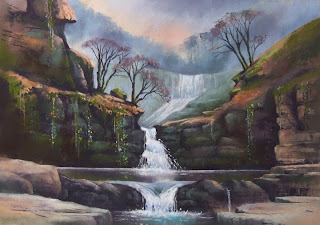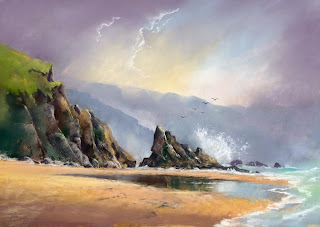Drawing from life is the best thing you can do to improve your drawing skills…..after all, if you can render a good likeness of the human figure where all the legs, arms and other paraphernalia should really all go in pretty specific places, then by comparison drawing a tree should be fairly problem-free. You only need to be vaguely accurate with the branches, for example, provided they are actually attached to the tree-trunk!
It is, however, rare that you get the opportunity to do some alfresco nude studies, especially at over 6,000 feet altitude as in this case where the model was bathing in water streaming off the Vignemale glacier! Whilst this has happened to me a few times, this is the only occasion that I’ve had the opportunity to carry out a nude study at such a high altitude.
The main lesson in this is not only that this sort of thing is excellent practice for you (drawing nude figures, I mean, not jumping naked into freezing lakes), but that it always pays to have your sketchbook with you and be prepared for all eventualities. You never know who or what is round the corner! You will find further advice on drawing the figure in my book David Bellamy’s Complete Guide to Watercolour Painting as seen on my website. One final piece of advice: wherever you are always ask permission before sketching or photographing anyone, especially when they are scantily clad or not clad at all.





